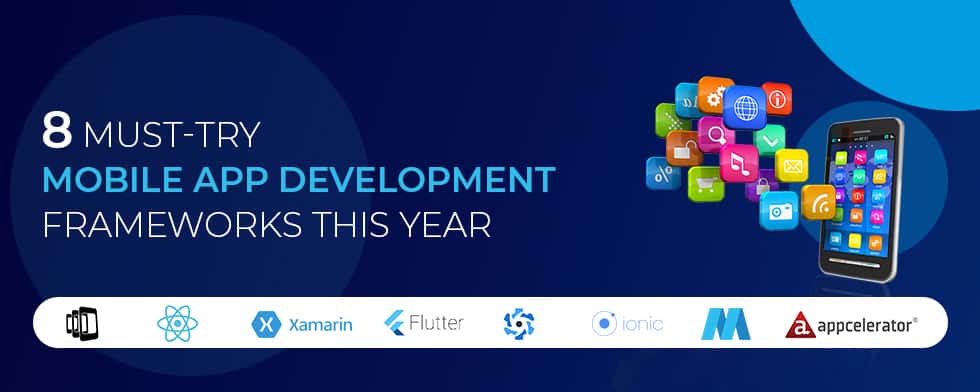
Mobile apps are in huge demand nowadays, all thanks to the ever-increasing number of mobile phone users because of which, mobile app development frameworks are being used more and more by IT service companies.
And this doesn’t end here, over the years the mobile industry has seen a considerable rise in the number of programming languages for both iOS and Android operating systems.
So let’s take a look at some of the most popular mobile app development frameworks that will become a major tool for the developers this year and beyond.
Adobe PhoneGap, developed by Apache Cordova is currently one of the most popular cross-platform frameworks in the market. It is basically an open source framework, which means you can reuse the existing web development skills for making hybrid applications. These applications are built with a single codebase which allows you to reach your audience regardless of the device.
React Native is another popular cross-platform framework in the market which was launched by social media giant Facebook itself back in 2013. It is also an open-source framework that offers ample support to the IDEs and other mobile app development tools. It uses the same fundamental UI building blocks as regular iOS and Android apps for easy operations.
Xamarin is an Android app development framework that lets you build your mobile app a lot faster. Xamarin is so popular that it is used by more than 1.5 million on a global scale. It is perfect for developing android apps without the support of Java. Besides, it offers a complete set of C# code base for developing native apps for other mobile operating systems as well.
Flutter is another powerful mobile app development framework which was backed by Google. Besides helping you build native iOS and Android applications, it allows you to develop these applications using Google’s very own programming language known as Dart. Now, what makes it particularly interesting is that in order to render the application, you don’t need WebView or other native UI components either.
Quasar came into the market in 2016 and became an instant hit. It has given developers the power to write code a single time and deploy it simultaneously as a desktop (using Electron), mobile app (Android, iOS), and website (SSR, PWA, SPA) using a single code base. Moreover, it offers HTML/CSS/JS minification, source mapping, cache busting, linting code, code-splitting, and ES6 transpiling while keeping a small performance overhead.
Ionic is another open source framework that is capable of building amazing native looking apps. It is widely popular because it provides tools and services for developing hybrid mobile apps using technologies such as CSS, HTML5, and Sass. moreover, it has support from community plugins to premium supported integrations.
This framework is accountable for easy and convenient development. It helps build HTML 5 mobile apps with Angular JS and Bootstrap besides containing some directives that make it easy to learn. It is basically an extension of the Bootstrap extension which contains certain mobile components such as switches, sidebars, overlays, scrollable areas, etc.
Titanium is a cross-platform framework that comes with full support for iOS and Android but is not included with CSS and HTML. It is more of a combination of native and javascript that helps improve a better performance for mobile hybrid development. Another noteworthy aspect is that it comes equipped with a number of mobile platform APIs and Cloud services to be used as an app backend.
If you start looking, you may find plenty of mobile app development frameworks available in the market that are worth considering while working on your next app development project. What I have offered is a list of some of the most prominent ones that are being talked about.